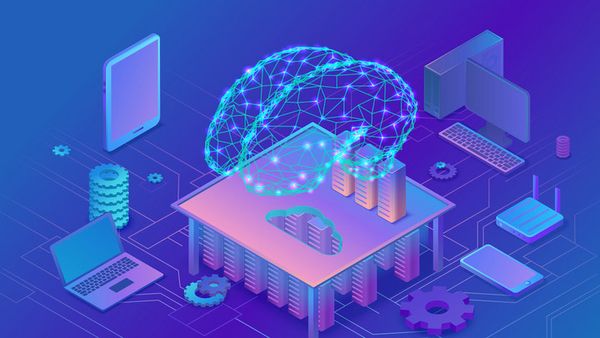
Why Internet Satellites Will Replace Subsea Cable Technology
March 4, 2020
Top 3 Ways Data Centers Are Going Green
March 12, 2020On this Page
- Virtualization and Software-Defined Data Center
- What Is the Age of Automation?
- What Are the Benefits of a Software-Defined Data Center?
- What Are the Disadvantages of Software-Defined Data Center?
Efficiency is important to a company’s productivity, which is why the idea of a software-defined data center is quite intriguing. Bringing data centers into the age of automation has already begun, but we’re only at the beginning of this new era. Data center operations are complicated and time-consuming, so using having these operations take care of itself through repeatable and automated actions are important for growth. A software-defined data center uses virtualization technology to separate hardware infrastructure into different virtual machines. This further extends a company’s resources and makes these resources more manageable.
Manually servicing servers one at a time can be tedious, so the idea of software taking care of these actions for you is welcomed by many. Software automation can dependably and consistently discover, deploy, and service the enter data center quickly and easily. A data center manager will simply need to create a template for workloads and applications and run the software. A minimum effort will be needed to manage a data center.

Photo Source: TechRadar
Virtualization and Software-Defined Data Center
Virtualization is a key component of a software-defined data center. To be specific, Network Virtualization, Server Virtualization, and Storage Virtualization are the three specific core components to this idea of automation. Let’s break this down.
Network Virtualization combines the physical networking equipment into one software-based resource. It also divides available bandwidth into numerous, independent channels. These channels can be assigned to specific servers and devices in real-time. If a business has many users who need their systems running at all times, network virtualization is very helpful. The distribution channels will increase your network speed which will allow you to deliver services and applications faster.
Server Virtualization allows multiple virtual machines to run on one physical server. Because servers process high volume tasks, so our desktops don’t overwork itself. The virtual servers share the resources (CPU, memory, storage, and networking) of the physical server. This type of virtualization divides and allocates the workload for these components that can be used by specific tasks.
Storage Virtualization groups multiple physical storage into one single storage device. This all happens within a virtual format making it easier to manage. Having many (if not all) of your storage in one location will make finding files easier and less time-consuming. You will be able to use your time more efficiently.

Photo Source: netcloudengineering
What Is the Age of Automation?
Because the data center is software-defined, it can also be automated. Data center automation can increase the speed of delivery for network resources. And because the software is capable of mapping out the different resources including storage, server, and the network, data centers will experience better flexibility and dependability.
Data center automation is quickly becoming more than an idea. Through the use of artificial intelligence, the age of automation is just around the corner. With the amount of data that we are constantly creating and needing to store, data center managers will need all of the help they can get. Automation will help data centers become more energy-efficient, which will also improve a data center’s environmental impact.
Automation will not only improve the use of energy, but it will also help with keeping the data center secure from any threats. Monitoring through artificial intelligence will allow data centers to be more secure.
One of the latest ways artificial intelligent technology is to be harnessed an AI-powered data center operator. This robot, named Dac, by a company called LitBit can solve problems on its own saving companies several hundred thousand dollars in manpower alone. Dac can identify and fix problems, recognize water leaks in the cooling system, fix loose electrical wires, and more. This type of automation and software-defined data center will change the way data centers operate.
What Are the Benefits of a Software-Defined Data Center?
There are many benefits to a software-defined data center, but one of the largest benefits is saving money. Storage can be re-allocated and shared by different clients through the software, and this can all be done through the program and without physical handling. The software can offer service agility by planning, provisioning, and managing services for all customers easily. Also, because the data center will deploy hardware components optimized for high energy consumption, software-defined data centers will reduce its energy consumption. Data centers will benefit from many different levels with a software-defined system.

Photo Source: networkworld
What Are the Disadvantages of Software-Defined Data Center?
Because software-defined data centers are quite new there are some disadvantages. Transitioning to a virtualized infrastructure can be difficult. It can interrupt current operations, and there will most likely be issues of compatibility from outdated legacy systems. Even once you are set up, outdated systems can cause inconsistent performance. If your data center runs older legacy systems you might need to do a complete overhaul. Although there will be some growing pains for older systems, data centers are trending towards this age of automation and a software-defined data center.
Conclusion
We are looking for ways to make anything we do easier and more convenient. The idea of “set it and forget it” is alive and well with the idea and implementation of the software-defined data center. The age of automation is upon us and data centers are receiving this treatment to make operations easier and more practical. Although transitioning into a software-defined data center can be difficult because of all of the updates needed, once the new system is in place there are many benefits to an automated data center. Reducing energy can make data center space more affordable or it could potentially yield more profit to providers. Saving energy will also help save our world’s limited resources.
There are many different types of virtualization and knowing the type or types of virtualization that will help your business is important. From Network Virtualization, Server Virtualization, to Storage Virtualization, most businesses will benefit from at least one type of virtualization. Because virtualization aims to simplify operations, businesses should take advantage of these benefits. Efficiency equals productivity, and virtualization and automation can bring many businesses to the next level.

